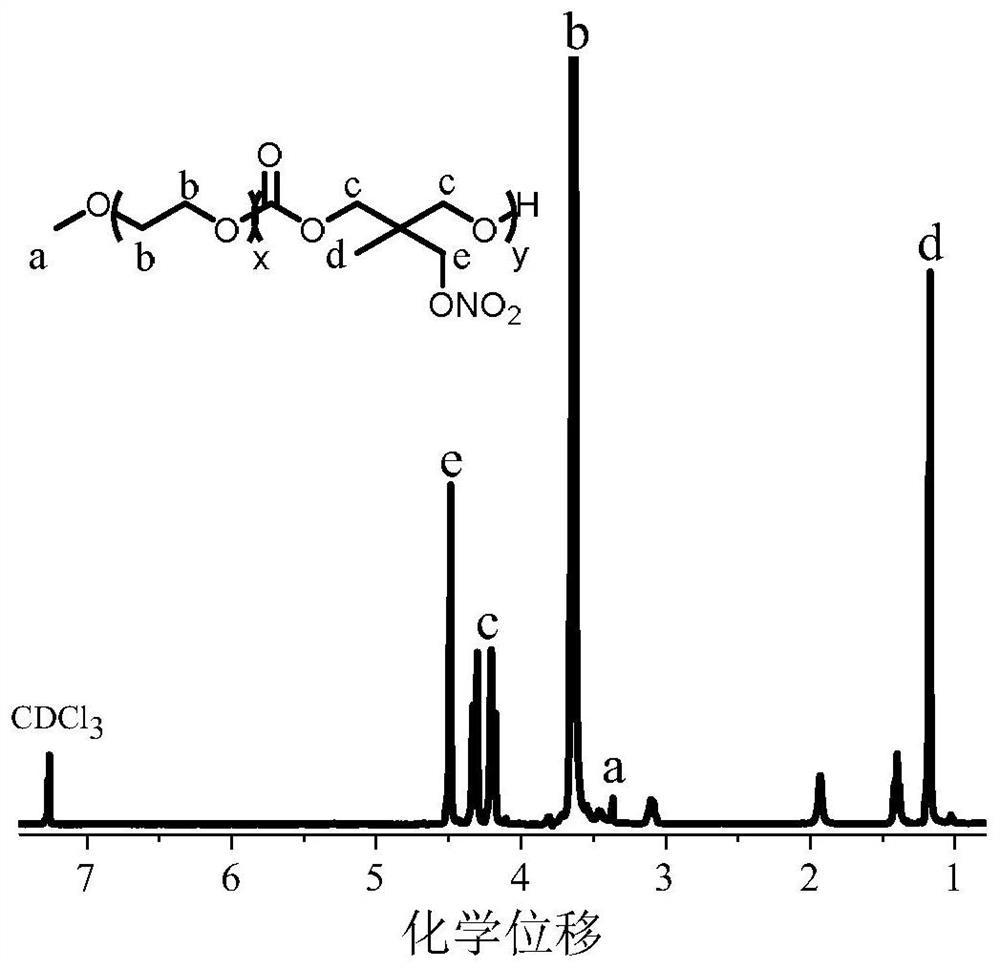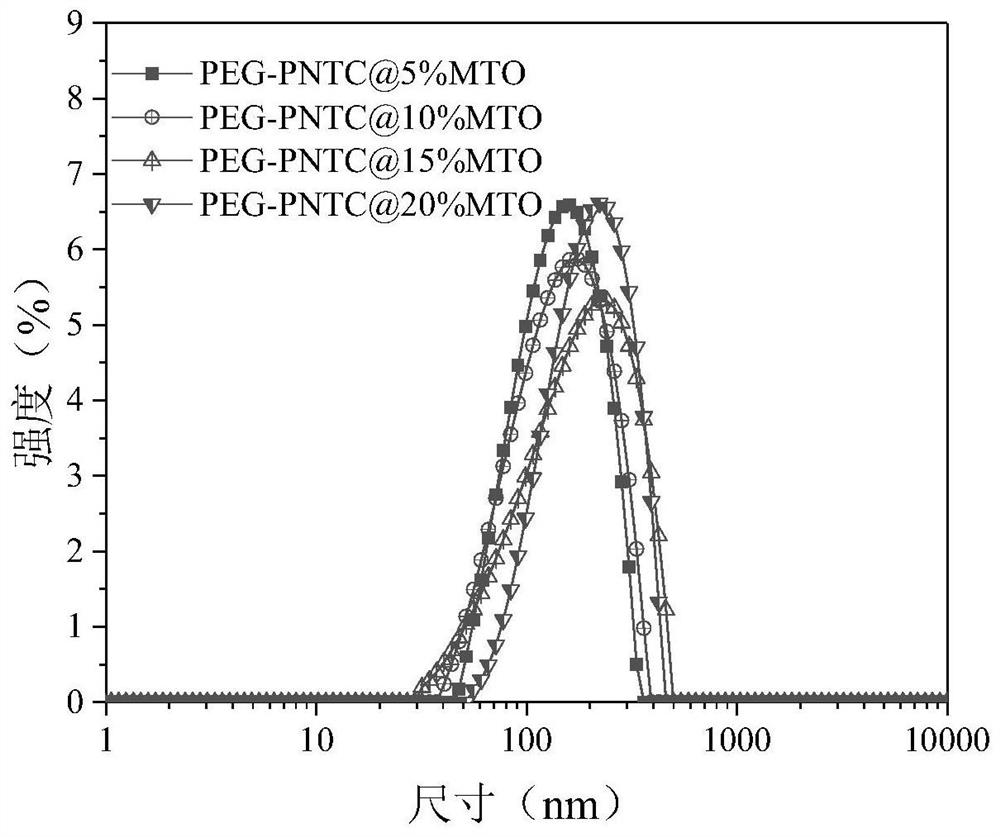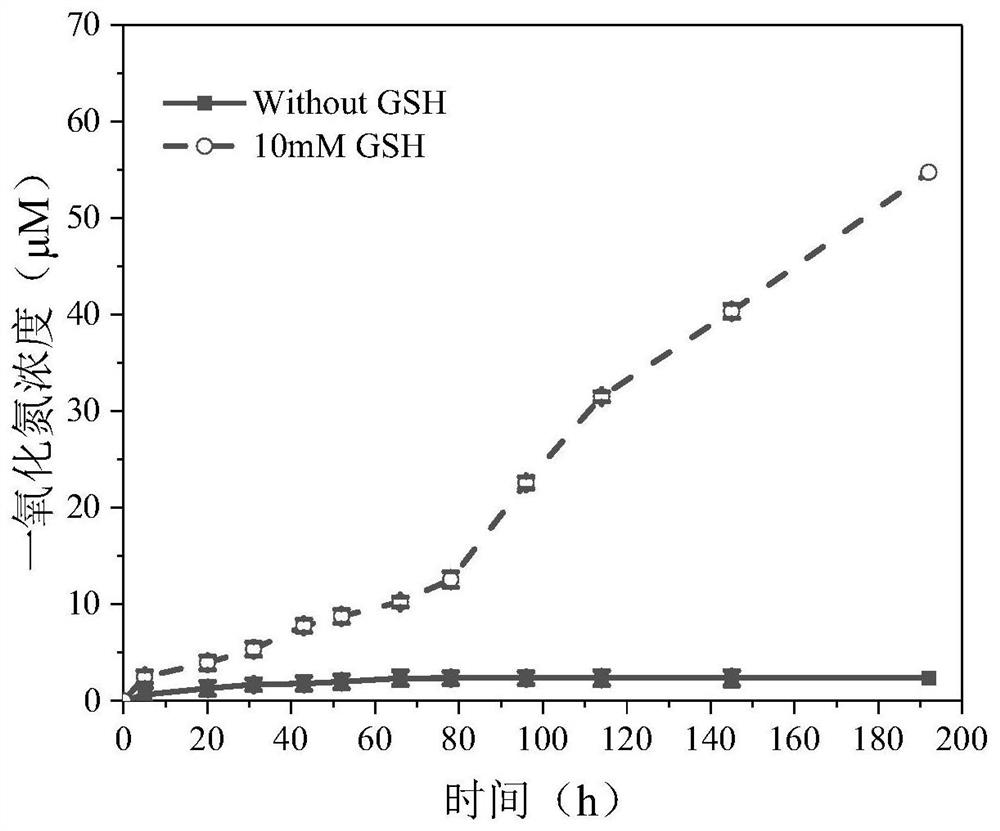Preparation method and application of polycarbonate drug-loaded nano chemosensitizer based on nitric oxide
A technology of nitric oxide and drug-loaded nanometers, applied in nanotechnology, nanotechnology, nanomedicine, etc., to achieve strong drug-loading capacity, reduce toxic and side effects, and have small toxic and side effects
- Summary
- Abstract
- Description
- Claims
- Application Information
AI Technical Summary
Problems solved by technology
Method used
Image
Examples
Embodiment 1
[0038] Embodiment 1, the synthesis of polymer mPEG-PNTC
[0039] Specifically, weigh 0.1g NTC monomer and 0.3g mPEG in a closed reactor in a glove box, add dichloromethane to dissolve, then add 3 drops of bis(bistrimethylsilyl)amine zinc catalyst, and then react Seal the device well, transfer it out of the glove box, and react in an oil bath at 30-50°C for 48 hours, then terminate the reaction with glacial acetic acid, then precipitate in glacial ether, and finally filter and vacuum-dry to obtain the product. NMR results show that its molecular weight is 5000-4800. See attached for NMR characterization figure 1 .
[0040]
Embodiment 2
[0041] Example 2, Preparation of Nitric Oxide Donor Chemosensitizer Containing Mitoxantrone
[0042] Take 0.1mL polymer mPEG-PNTC in DMF solution (10mg / mL) and 10μL mitoxantrone in DMF solution (20mg / mL) and mix well, then slowly add the mixed solution dropwise to the phosphate buffer under ultrasonic conditions , continue to sonicate for 10 min, and then dialyze to remove the organic solvent and uncoated mitoxantrone. The micelles encapsulating mitoxantrone were measured by a microplate reader. Drug loading (DLC) and encapsulation efficiency (DLE) were calculated by the following formulas:
[0043] Drug loading (%) = (loaded drug mass / polymer and drug total mass) × 100%
[0044] Encapsulation efficiency (%)=(loaded drug quality / total drug input amount)×100%
[0045] Table 1 shows the actual encapsulation efficiency of mPEG-PNTC polymer micelles when the theoretical drug loading of mitoxantrone is 5%, 10%, 15% and 20%, respectively.
[0046] Table 1. Characterization of poly...
Embodiment 3
[0049] Example 3, preparation of doxorubicin-loaded micelles by dialysis
[0050] Take 0.1mL of polymer mPEG-PNTC in DMF solution (10mg / mL) and 10μL of doxorubicin in DMF solution (20mg / mL) and mix evenly, then slowly add the mixed solution dropwise to the phosphate buffer under ultrasonic conditions, Continue to sonicate for 10 minutes, and then dialyze to remove the organic solvent and uncoated doxorubicin. The doxorubicin-encapsulated micelles were measured by a microplate reader. Drug loading (DLC) and encapsulation efficiency (DLE) were calculated by the following formulas:
[0051] Drug loading (%) = (loaded drug mass / polymer and drug total mass) × 100%
[0052] Encapsulation efficiency (%)=(loaded drug quality / total drug input amount)×100%
[0053] The dimensions of the samples were measured by a dynamic light scattering analyzer.
PUM
 Login to View More
Login to View More Abstract
Description
Claims
Application Information
 Login to View More
Login to View More - R&D
- Intellectual Property
- Life Sciences
- Materials
- Tech Scout
- Unparalleled Data Quality
- Higher Quality Content
- 60% Fewer Hallucinations
Browse by: Latest US Patents, China's latest patents, Technical Efficacy Thesaurus, Application Domain, Technology Topic, Popular Technical Reports.
© 2025 PatSnap. All rights reserved.Legal|Privacy policy|Modern Slavery Act Transparency Statement|Sitemap|About US| Contact US: help@patsnap.com



